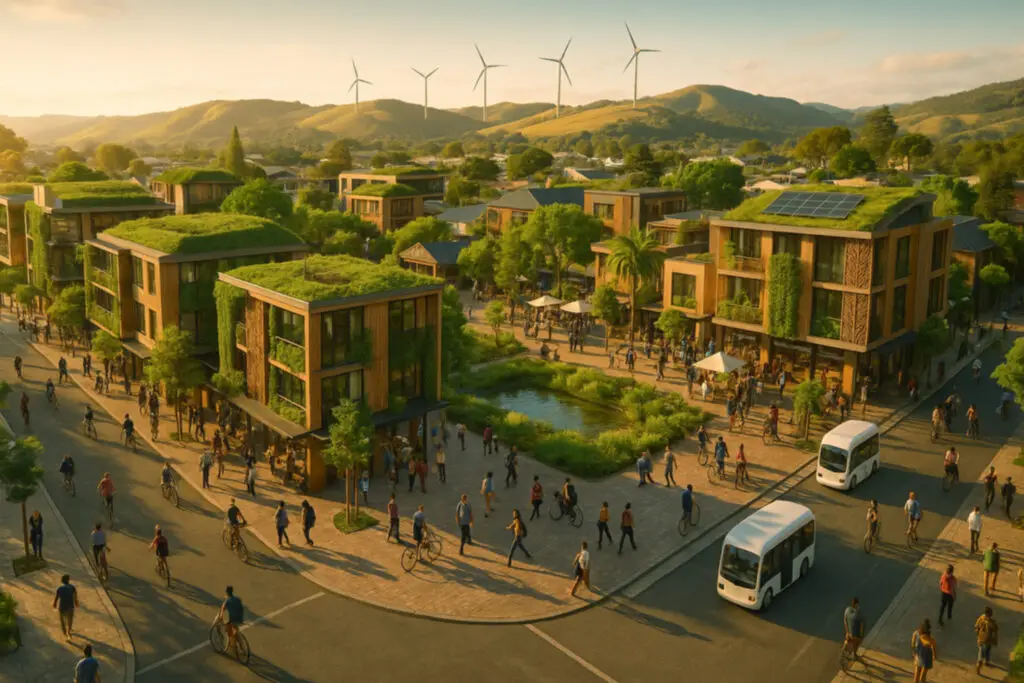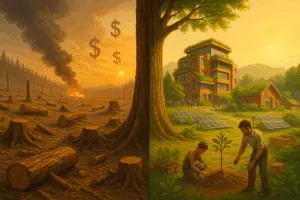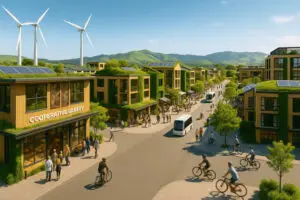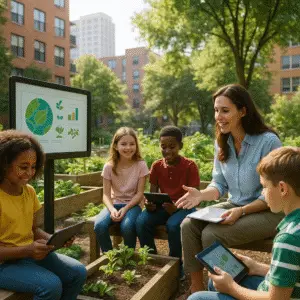Institutional Researches Development Tech

Institutional Researches Development Tech, Sustainable Urban Development explores how governments, councils, universities, and NGOs create the policies, funding streams, and legal frameworks that turn green-city visions into reality.
Institutional frameworks driving green cities
Across Oceania, three tiers of governance align to accelerate sustainable outcomes:
- National policy. Australia is drafting a National Urban Policy that synchronises climate targets with city planning, while New Zealand’s National Policy Statement on Urban Development guides compact, low-carbon growth.
- Local regulation. Wellington’s strict green-building codes and Auckland’s Unitary Plan embed energy performance, transit integration, and biodiversity into planning approvals.
- Research & civil society. Symposia such as “Urban Forest Futures” convene scientists, iwi representatives, and planners to co-design urban nature strategies.
These governance layers produce quantifiable impact. Green construction jobs in Australia and New Zealand have grown 23 % since 2015, adding 50 000 positions and confirming the economic value of institutional leadership.
Financing & technology innovations (2024–2025)
Institutions are pairing novel finance with smart-city tools:
- Green capital. Wellington’s environmental-impact bonds fund coastal resilience, while Sydney offers density bonuses for vegetated facades that reduce urban-heat stress.
- Smart optimisation. Cities integrate AI traffic systems—Seattle’s Project Green Light cut idling emissions by 10 %—and open-data hackathons that crowd-solve waste or transit bottlenecks.
- International support. The World Bank now invests about US$5 billion a year in sustainable-urban programmes, helping cities finance low-carbon transport and inclusive housing.
This blend of finance and tech embeds sustainability into everyday urban operations while attracting private-sector participation.
Challenges and adaptive solutions
Bureaucratic inertia, upfront costs, and community push-back can impede progress. Effective counter-measures include:
- Streamlined governance. Multi-level compacts—e.g., the Montréal Call to Action on Cities—align local and national climate targets beyond election cycles.
- Unified standards. Harmonised green-building codes eliminate compliance confusion and accelerate permitting.
- Innovative finance. Green bonds, PPPs, and land-value capture distribute capital costs and incentivise developers.
- Deep engagement. Co-design workshops, participatory budgeting, and transparent data portals build public trust and reduce resistance.
The result is an adaptive institutional ecosystem capable of overcoming traditional barriers and delivering measurable environmental, social, and economic benefits.
Next steps
For practitioners, the priority is to replicate these aligned policy-finance-technology models, tailor them to local contexts, and document results for peer learning.
Technical

Short Long Term Profit Tech
Short Long Term Profit Tech describes the gap between rapid gains and durable value; closing that gap is central to sound policy, finance, and corporate strategy. Infrastructure: the cost of deferred upkeep Short Long Term Profit Tech The 2007 collapse of Minneapolis’s I-35W bridge shows how chasing short-term savings can

Global Insights Green Tech
Global Insights Green Tech Infrastructure research reveals that urban sustainability advances fastest when cities treat climate solutions as shared intellectual capital rather than proprietary assets. The cross-regional exchange, for instance, of green infrastructure policies—from Copenhagen’s storm-water “sponge” parks to Vancouver’s low-carbon mobility—lets planners skip trial-and-error and move directly to scalable,

Education Strategies Tech
Education Strategies Tech in Sustainable Development Education strategies tech plays a central role in driving sustainable development in Australia. As communities face urgent climate and ecological challenges, educational efforts ensure that people are both informed and engaged. Notably, outreach is no longer confined to schools—it spans apps, public media, and